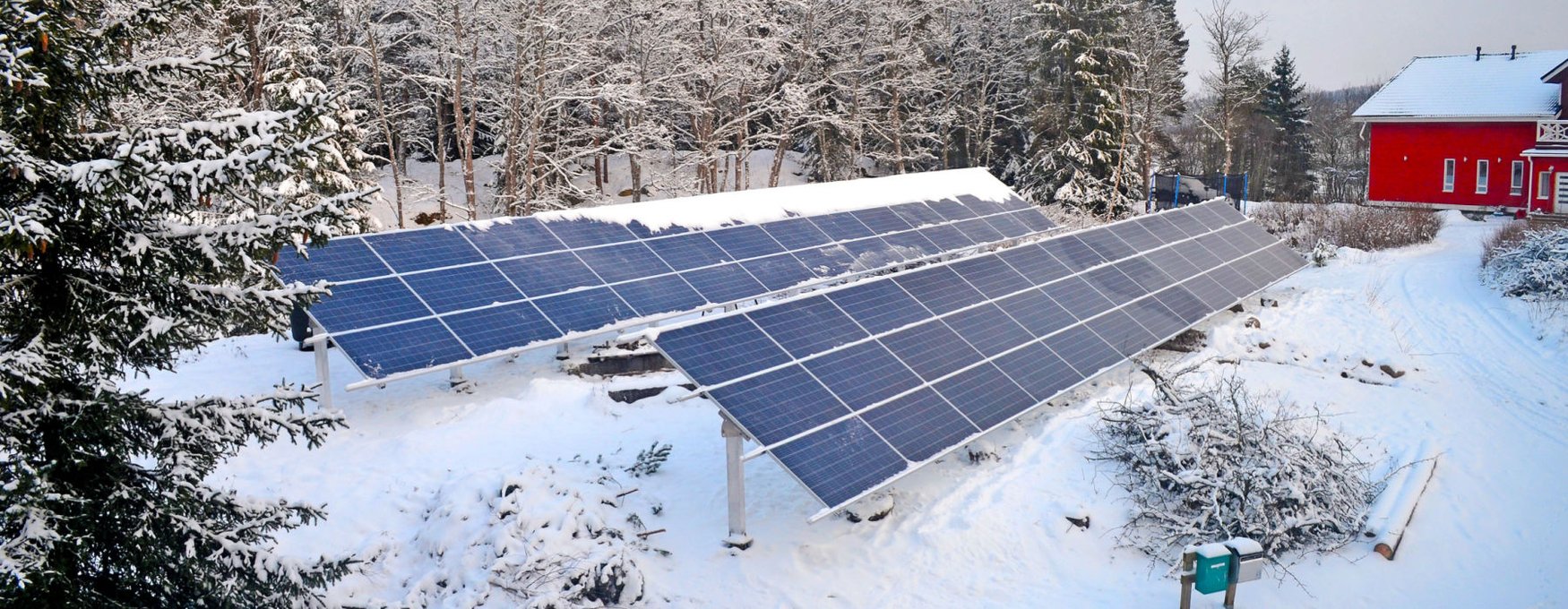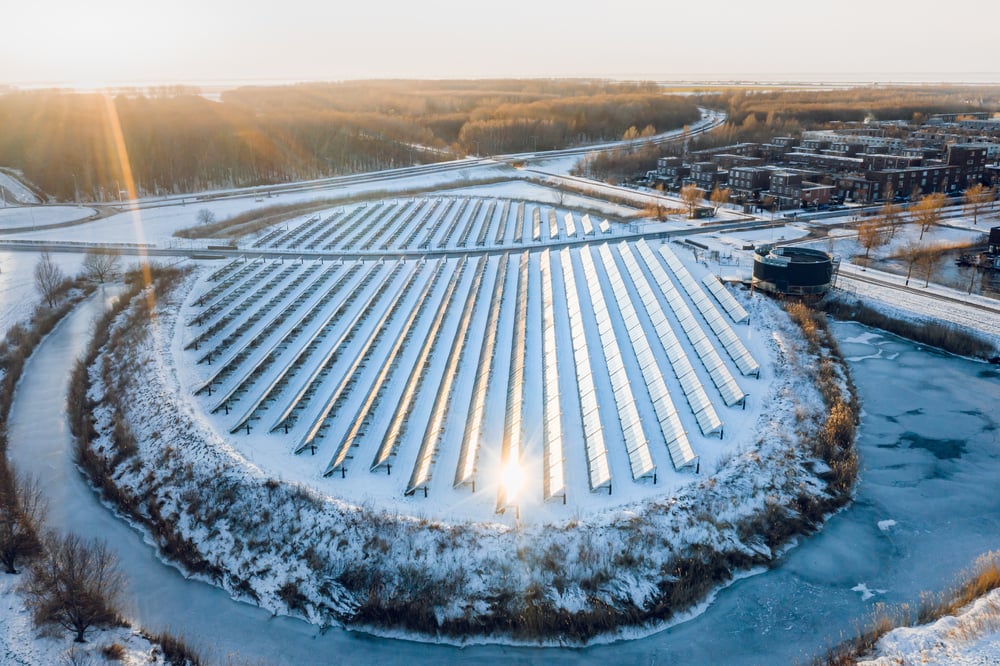How Does Winter Affect Solar Panel Productivity?

Commercial solar projects are often analyzed based on their annual performance: electricity generation in kilowatt-hours, and the corresponding dollar amount the owner can expect to save. This approach is useful when presenting a quick financial overview of a commercial solar project: high-quality PV modules can last for more than 25 years, and a month-by-month cash flow would have more than 300 lines.
Get a professional solar roof design for your building and qualify for financial incentives.
Annual cash flow projections are convenient, but commercial solar owners must be aware that sunlight conditions change throughout the year. A 220-kW solar array can have an estimated annual production of 300,000 kWh, but this doesn’t mean the owner will get exactly 25,000 kWh per month. This is the average monthly output, but the actual monthly production varies throughout the year due to changing sunlight conditions:
- Abundant sunshine results in above-average production during summer.
- Low sunshine results in below-average production during winter.
Commercial solar systems owners must also be aware that PV module productivity decreases over time. If you compare the electricity output for a given month during several consecutive years, you will notice that productivity gradually decreases. However, quality solar panels normally have a 2-3% productivity loss during the first year, and then less than 0.50% per year. You can now find solar modules that still have more than 85% of their initial output after a 25-year service life.
Solar Generation in Winter: Using the World Bank Global Solar Atlas

The Global Solar Atlas is a very useful tool from the World Bank Group, which provides detailed information about solar resources in any project site. This includes an estimate of annual productivity in kWh/kWp (kilowatt-hours per kilowatt-peak of solar capacity), and a breakdown of monthly productivity.
If you search for locations in New York City and surrounding areas, you will find that solar panel productivity is typically between 1,300 and 1,500 kWh/kWp per year. For the owner of a 200-kW solar array, the output can range from around 260,000 to 300,000 kWh per year.
Keep in mind these are general productivity figures based on solar maps. To determine the productivity of a commercial solar array in a given site, you need a professional feasibility study and PV system design. However, ballpark figures are useful as a starting point.
Comparing Solar Panel Productivity in Summer and Winter
Assume you plan to install a 200-kW commercial solar array, and the Global Solar Atlas shows an estimated electricity output of 275,000 kWh/year (275 MWh/year) for your site. However, this output is not evenly distributed throughout the year, and the Atlas shows the following results:
|
MONTH |
SOLAR GENERATION |
|
January |
18,400 kWh |
|
February |
20,300 kWh |
|
March |
25,800 kWh |
|
April |
25,600 kWh |
|
May |
26,600 kWh |
|
June |
25,800 kWh |
|
July |
26,900 kWh |
|
August |
26,000 kWh |
|
September |
24,100 kWh |
|
October |
21,400 kWh |
|
November |
18,300 kWh |
|
December |
15,800 kWh |
|
Annual Generation |
275,000 kWh |
In this case, July is the most productive month with an electricity output of 26,900 kWh, while December is the least productive month with only 15,800 kWh. In this case, the electricity output of the most productive summer month is 11,100 kWh more (70% higher) compared with the least productive winter month.
- Considering 275,000 kWh/year, the average monthly output is 22,917 kWh.
- The months where the estimated output falls closest to this value are September and October, with estimated productivity values of 24,100 kWh and 21,400 kWh.
Having a higher solar output during summer is convenient, since it helps compensate for the high air conditioning loads. Solar productivity decreases during winter, but buildings are also using less electricity on average. Most air conditioning systems are fully electric, while space heating systems often depend on natural gas and heating oil. However, this is starting to change with the increased use of fully electric heat pumps.

Michael Tobias
Michael Tobias, the Founding Principal of NY Engineers, currently leads a team of 50+ MEP/FP engineers and has led over 1,000 projects in the US
Join 15,000+ Fellow Architects and Contractors
Get expert engineering tips straight to your inbox. Subscribe to the NY Engineers Blog below.



